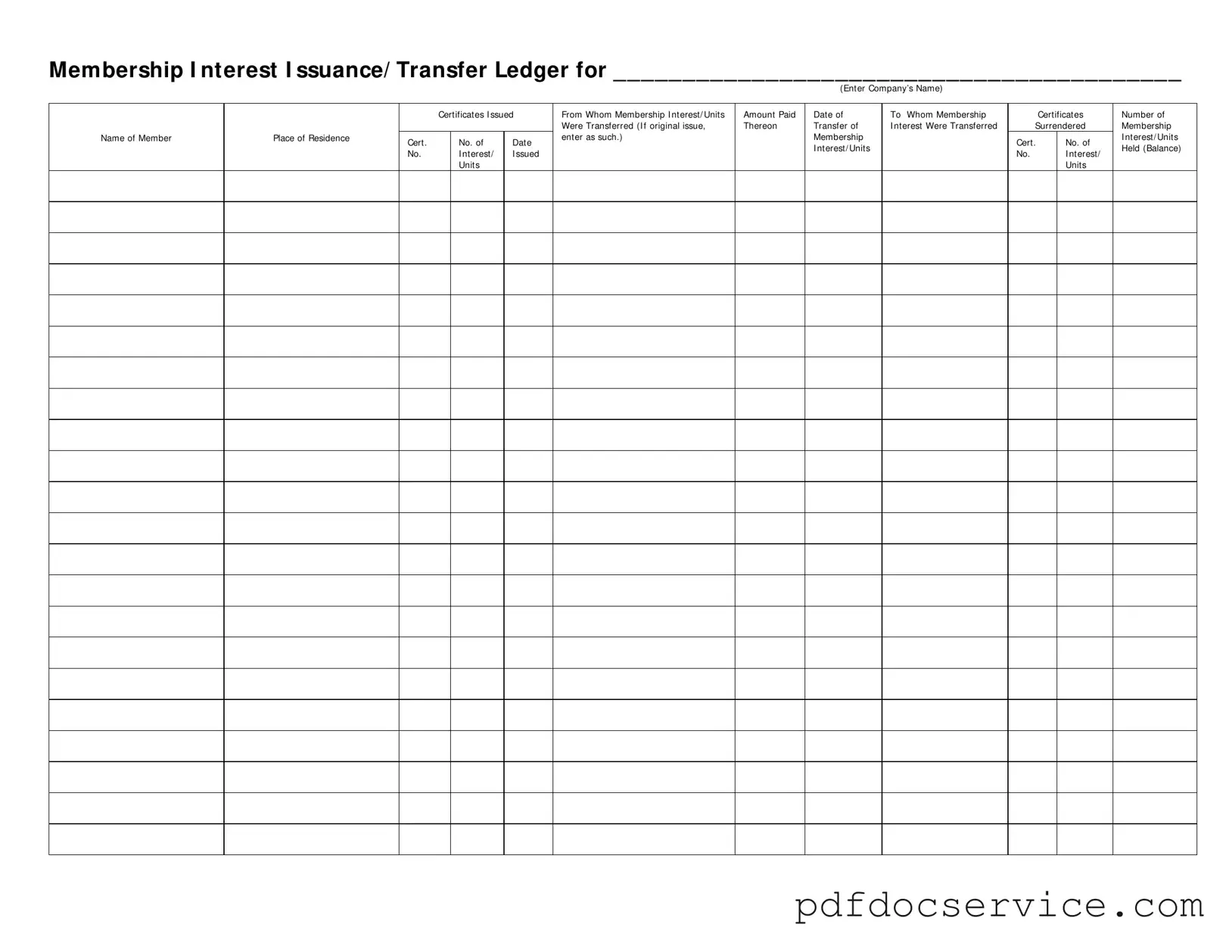Fill Your Membership Ledger Form
The Membership Ledger form is a crucial document used to track the issuance and transfer of membership interests or units within a company. This form captures essential details, such as the company’s name, the certificates issued, and the specific transactions involving membership interests. By maintaining an accurate ledger, companies can ensure transparency and proper record-keeping of their membership interests.
Open Membership Ledger Editor
